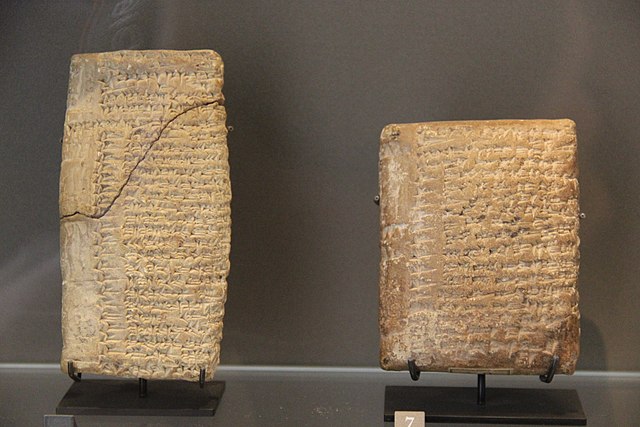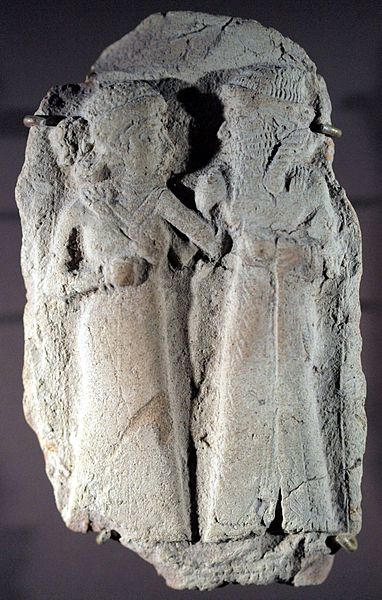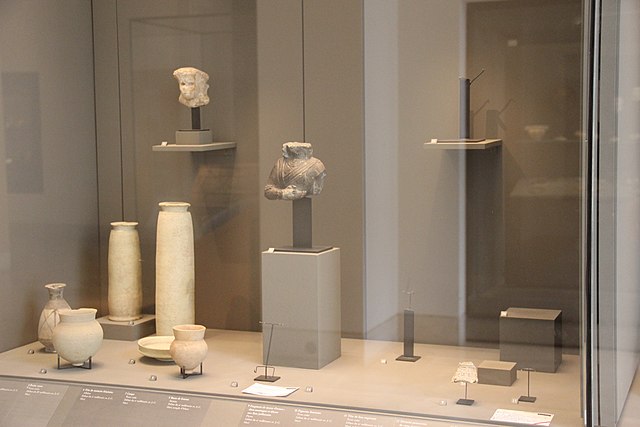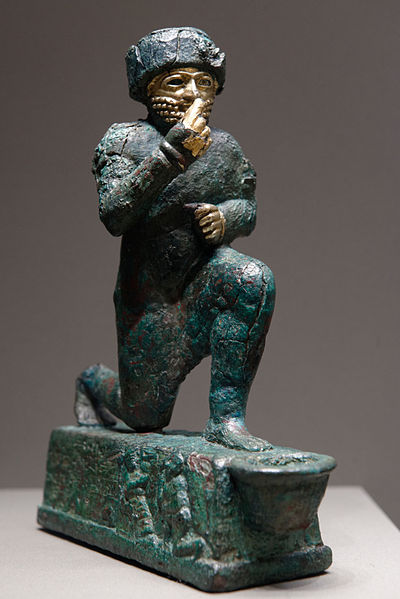
| MARUTT / MORITE / AMORITE Important Note :
Here, I have purposely removed many of the false things written about Marutts (Amorites) in Wikipedia because not everything written in Wikipedia is true and people need to also do their own research by reading various books written by genuine researchers whose "pen is not for sale".
Here, what the Wikipedia volunteers forget to read is the Vedas, especially Rig Ved where many Hymns are written about Marutt (Amorites) and by reading the Vedic Hymns written by Vedic Aryan Brahmins (Priests) we come to know that Marutts were not as what the Wikipedia volunteers have written and tried to portray.
The Vedic Aryans knew Marutts and have praised them in Veds in form of Vedic Hymns.
Also here it becomes important to read books written by Lieutenant Colonel Laurence Austine Waddell to know more about Marutts (Amorites).
Cuneiform clay tablets from the Amorite Kingdom of Mari, 1st half of the 2nd millennium BC The Amorites (Sumerian : MAR.TU; Akkadian : Amurrum or Tidnum; Egyptian Amar; Hebrew: 'Emori; Ancient) were an ancient Northwest Semitic-speaking people from the Levant who also occupied large parts of southern Mesopotamia from the 21st century BC to the end of the 17th century BC, where they established several prominent city-states in existing locations, such as Isin, Larsa and later notably Babylon, which was raised from a small town to an independent state and a major city. The term Amurru in Akkadian and Sumerian texts refers to the Amorites, their principal deity and an Amorite kingdom.
The Amorites are also mentioned in the Bible as inhabitants of Canaan both before and after the conquest of the land under Joshua.
Origin :
Terracotta of a couple, Girsu, Amorite period, 2000 - 1600 BC. Louvre Museum AO 16676 In the earliest Sumerian sources concerning the Amorites, beginning about 2400 BC, the land of the Amorites ("the Mar.tu land") is associated not with Mesopotamia but with the lands to the west of the Euphrates, including Canaan and what was to become Syria by the 3rd century BC, then known as The land of the Amurru, and later as Aram and Eber-Nari.
The ethnic terms Mar.tu ("Westerners"), Amurru (suggested in 2007 to be derived from aburru, "pasture") and Amor were used for them in Sumerian, Akkadian, and Ancient Egyptian respectively. From the 21st century BC, possibly triggered by a long major drought starting about 2200 BC, a large-scale migration of Amorite tribes infiltrated southern Mesopotamia. They were one of the instruments of the downfall of the Third Dynasty of Ur, and Amorite dynasties not only usurped the long-extant native city-states such as Isin, Larsa, Eshnunna, and Kish, but also established new ones, the most famous of which was to become Babylon, although it was initially a minor insignificant state.
Known Amorites wrote in a dialect of Akkadian found on tablets at Mari dating from 1800 - 1750 BC. Since the language shows northwest Semitic forms, words and constructions, the Amorite language is a Northwest Semitic language, and possibly one of the Canaanite languages. The main sources for the extremely limited knowledge about Amorite are the proper names, not Akkadian in style, that are preserved in such texts. The Akkadian language of the native Semitic states, cities and polities of Mesopotamia (Akkad, Assyria, Babylonia, Isin, Kish, Larsa, Ur, Nippur, Uruk, Eridu, Adab, Akshak, Eshnunna, Nuzi, Ekallatum, etc.), was from the east Semitic, as was the Eblaite of the northern Levant.
Homeland
:
History
:
There are also sparse mentions in tablets from the East Semitic-speaking kingdom of Ebla, dating from 2500 BC to the destruction of the city c. 2250 BC: from the perspective of the Eblaites, the Amorites were a rural group living in the narrow basin of the middle and upper Euphrates in northern Syria. For the Akkadian kings of central Mesopotamia Mar.tu was one of the "Four Quarters" surrounding Akkad, along with Subartu/Assyria, Sumer, and Elam. Naram-Sin of Akkad records successful campaigns against them in northern Syria c. 2240 BC, and his successor, Shar-Guni / Shar-Kali-Sharri, followed suit.
Artifacts from Amorite Kingdom of Mari, 1st half of 2nd millennium BC By the time of the last days of the Third Dynasty of Ur, the immigrating Amorites had become such a force that kings such as Shu-Sin were obliged to construct a 270-kilometre (170 mi) wall from the Tigris to the Euphrates to hold them off.
As the centralized structure of the Third Dynasty slowly collapsed, the component regions, such as Assyria in the north and the city-states of the south such as Isin, Larsa and Eshnunna, began to reassert their former independence, and the areas in southern Mesopotamia with Amorites were no exception. Elsewhere, the armies of Elam, in southern Iran, were attacking and weakening the empire, making it vulnerable.
One of the Ramesses III prisoner tiles, speculated by some scholars [who?] to represent an Amorite man Many Amorite chieftains in southern Mesopotamia aggressively took advantage of the failing empire to seize power for themselves. There was not an Amorite invasion of southern Mesopotamia as such, but Amorites ascended to power in many locations, especially during the reign of the last king of the Neo-Sumerian Empire, Ibbi-Sin. Leaders with Amorite names assumed power in various places, usurping native Akkadian rulers, including in Isin, Eshnunna and Larsa. The small town of Babylon, unimportant both politically and militarily, was raised to the status of a minor independent city-state, under Sumu-abum in 1894 BC.
The Elamites finally sacked Ur in c. 2004 BC. Some time later, the Old Assyrian Empire (c. 2050 - 1750 BC) became the most powerful entity in Mesopotamia immediately preceding the rise of the Amorite king Hammurabi of Babylon. The new Assyrian monarchic line was founded by c. 2050 BC; their kings repelled attempted Amorite incursions, and may have countered their influence in the south as well under Erishum I, Ilu-shuma and Sargon I. However, even Assyria eventually found its throne usurped by an Amorite in 1809 BC: the last two rulers of the Old Assyrian Empire period, Shamshi-Adad I and Ishme-Dagan, were Amorites who originated in Terqa (now in northeastern Syria).
Downfall
:
After their expulsion from Mesopotamia, the Amorites of Syria came under the domination of first the Hittites and, from the 14th century BC, the Middle Assyrian Empire (1365 - 1050). They appear to have been displaced or absorbed by a new wave of semi-nomadic West Semitic-speaking peoples, known collectively as the Ahlamu during the Late Bronze Age collapse. The Arameans rose to be the prominent group amongst the Ahlamu, and from c. 1200 BC on, the Amorites disappeared from the pages of history. From then on, the region that they had inhabited became known as Aram ("Aramea") and Eber-Nari.
Amurru (god) :
"The Worshipper of Larsa", a votive statuette dedicated to the god Amurru for Hammurabi's life, early 2nd millennium BC, Louvre Amurru and Martu are names given in Akkadian and Sumerian texts to the god of the Amorite/Amurru people, often forming part of personal names. He is sometimes called Ilu Amurru (DMAR.TU). He was the patron god of the Mesopotamian city of Ninab, whose exact location is unknown. He was occasionally called "lord of the steppe" or "lord of the mountain".
Description
:
Bêl Šadê could also have become the fertility-god 'Ba'al', possibly adopted by the Canaanites, a rival and enemy of the Hebrew God YHWH, and famously combatted by the Hebrew prophet Elijah.
Amurru also has storm-god features. Like Adad, Amurru bears the epithet raman 'thunderer', and he is even called bariqu 'hurler of the thunderbolt' and Adad ša a-bu-be 'Adad of the deluge'. Yet his iconography is distinct from that of Adad, and he sometimes appears alongside Adad with a baton of power or throwstick, while Adad bears a conventional thunderbolt.
Wife
:
Another tradition about Amurru's wife (or one of Amurru's wives) gives her name as Belit-Sheri, 'Lady of the Desert'.
A third tradition appears in a Sumerian poem in pastoral style, which relates how the god Martu came to marry Adgar-kidug the daughter of the god Numushda of the city of Inab. It contains a speech expressing urbanite Sumerian disgust at uncivilized, nomadic Amurru life which Adgar-kidug ignores, responding only: "I will marry Martu!".
Source :
https://en.wikipedia.org/
https://en.wikipedia.org/ |



.jpg)
